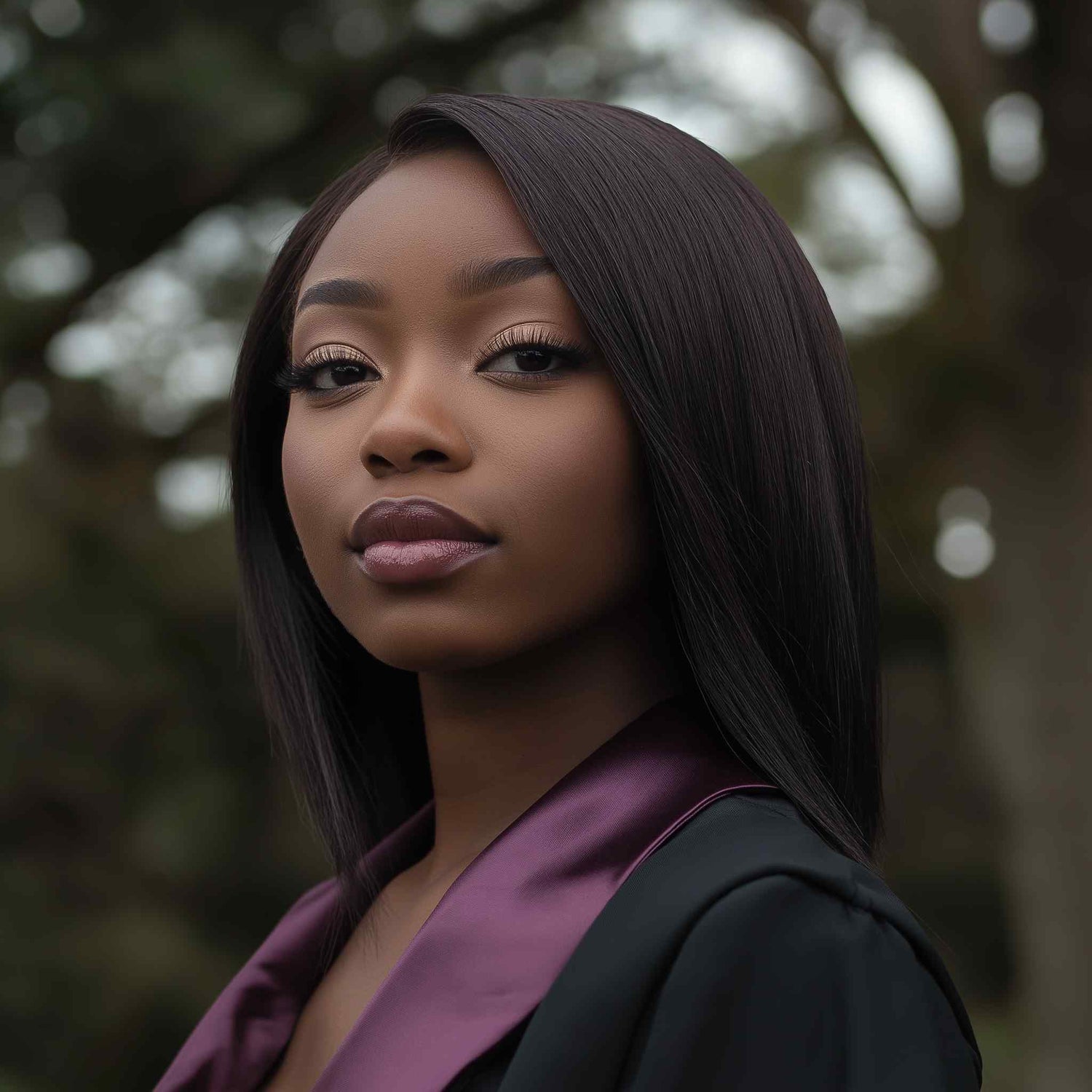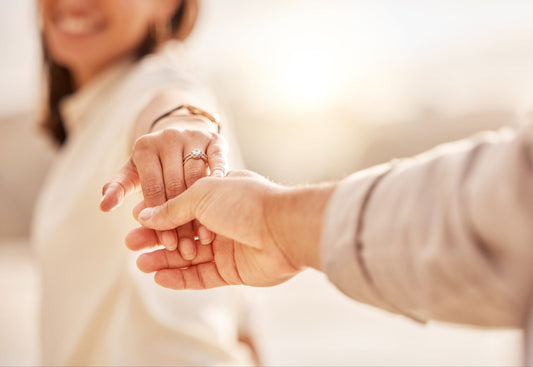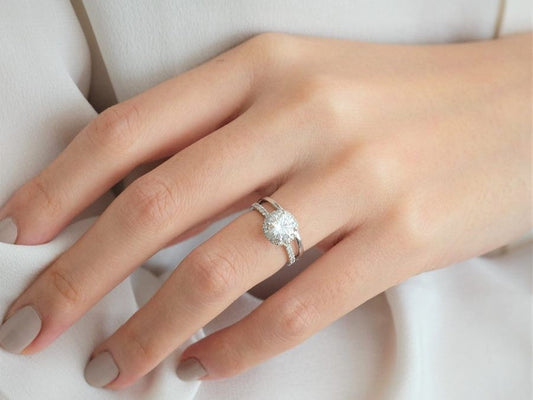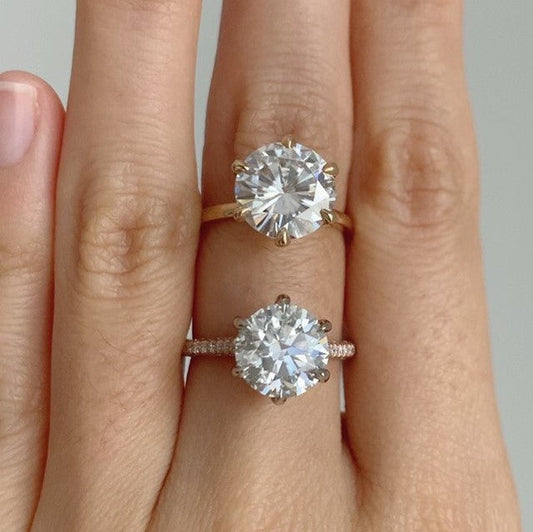Engagement rings can be a testament to your love, a sign of your devotion, and can even tell a story about you and your partner.
But where did engagement rings originate? What’s the history of engagement rings, and how have the trends changed over the years?
Let’s find out.
A Brief History of Engagement Rings
It isn’t easy to know for certain the exact date when engagement rings first became popular. Some experts believe that the symbol of the engagement ring dates back to the ancient Egyptians. This unique culture viewed circles as symbols of eternity. Couples exchanged rings made from braided reeds.
By the second century B.C., the meaning behind engagement rings had lost some of its romance. Ancient Romans started a tradition of using rings as a contract signature. Grooms gave brides rings to show they belonged to someone. Sometimes, the bride wore a gold ring at the ceremony, then an iron one at home.
It was centuries before intricate viaggio rings and diamonds became a popular fad. Today, around 80% of brides say “I do” to a diamond ring.
Popular Engagement Rings Through the Ages
The history of engagement rings is long and varied. Over the decades, trends have changed everything from the metal that brides wear to the gems and cuts they prefer.
The 1900s to 1920s
In the 1900s, 1910 wedding rings, and those popular into the 1920s often shared an Edwardian style. These rings were rich in delicate details, often featuring large diamonds at the center. Jewelers strove to add as many glittering gems to their engagement rings as possible, which led to very ornate jewelry.
In the 1910s, the most popular stone was the European cut diamond. Towards the mid-1920s, new designs began to appear with the Art Deco movement. Angled lines and bold colors became more popular.
The 1920s to 1940s
The 1920s introduced a lot of angular cuts, similar to the Heidi Gibson designs rings you might see today. The Jazz era kicked off a new demand for color, with bright and bold rings that were less intricate than their Edwardian predecessors.
By the 1940s, jewelers were looking to keep rings affordable. Intricate bows, flowers, leaves, and hearts were included in the ring’s metal to reduce the demand for expensive stones.
The 1940s to 1960s
Fashion in the mid-40s featured glamorous solitaire and cushion-cut stones. Proposing with diamonds was more popular at this time. It wasn’t until the late 50s when Elizabeth Taylor’s engagement ring sparked a desire for emerald-cut stones.
By the time 1960s wedding rings arrived, bright, shiny diamonds were all the rage. One of the best-known engagement rings of the era was Aretha Franklin’s sleek and chic cut with a simple square stone.
The 1960s to the 1980s
Through the late 60s and towards the beginning of the 70s, geometric and angular rings were increasingly popular, with some actresses and big names like Jackie Kennedy bringing emeralds back into fashion. Engagement rings from the 70s weren’t as intricate as those from the 20s and 30s, but bigger stones regained their popularity.
Yellow gold was the most popular metal of choice for 1970 engagement ring designs into the early 80s, bringing more bright colors back into the industry.
The 1980s to the 2000s
1980s engagement rings still featured yellow gold, and different colored gemstones became popular accompaniments to the diamond. Sapphire, emerald, and rubies all reached a new level of appeal, though most people stuck to simple, more minimalist designs with less intricate metalwork.
By the 1990s, cooler metals like white gold and platinum overtook yellow gold. By the early 2000s, people everywhere were asking, “are halo engagement rings a fad?” They seemed to be everywhere.
How to Find the Perfect Engagement Ring
Popular engagement rings 2016 introduced the pavé style band, scattered with diamonds. Now, in the 2020s, trends are shifting towards thin bands and oval-shaped stones. However, there are plenty of options to choose from, so you don’t have to stick to the trends. When shopping for your ring, remember:
Pick the right shape: Look for the right gem shape. Oval is popular right now, but your bride may prefer the more angular shapes of Heidi Gibson style rings.
Choose a metal: Traditional options include white or yellow gold, silver, or platinum. Rose gold emerged as a fresh alternative in recent years.
Consider carat size: A larger carat size delivers more clarity in your diamond or gemstone. The more carats, the more you’ll pay.
Get measured correctly: Make sure the ring fits properly – not too tight or too loose. This will ensure you don’t have to ruin the design with a re-size.
Finding the Right Ring
There you have it — the fascinating history of engagement rings.
The ideal engagement ring is different for every bride to be. Think carefully about the styles and trends that will appeal most to your fiancé. A brilliant gemstone that’s conflict-free can make your bride feel better about the sparkle on her finger. If you want to learn more about environmentally-responsible engagement ring choices, like our moissanite solitaire engagement rings, get in touch with us today.




